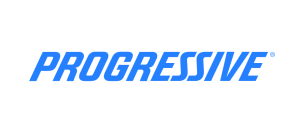When it comes to purchasing insurance, whether it's for your car, home, health, or life, understanding key terms like insurance premiums, deductibles, and limits is crucial. These elements directly affect the cost, coverage, and overall value of your insurance policy. Whether you’re shopping for insurance for the first time or revisiting your current policy, comprehending how these components work can help you make informed decisions and ensure you’re getting the best coverage for your needs.
This article will break down each of these fundamental insurance terms, explain how they interact with one another, and offer tips on how to balance them effectively for optimal protection.
What is an Insurance Premium?
The insurance premium is the amount of money you pay to your insurance company in exchange for coverage. It’s typically paid on a regular basis—monthly, quarterly, or annually—depending on the type of policy and your preference. Think of your premium as the price you pay for your insurance protection.
Key Points to Understand About Insurance Premiums:
-
Premium Amount: The premium is influenced by several factors, including the type of insurance (auto, home, life, etc.), your level of coverage, the insurer, and your personal circumstances (such as age, driving record, health, and home location).
-
Risk Assessment: Insurers assess risk before determining your premium. For example, a younger driver may have a higher car insurance premium due to a higher risk of accidents, or someone living in a high-crime neighborhood may pay more for home insurance.
-
Payment Frequency: While you can often choose how frequently you pay your premiums, paying annually or semi-annually may come with discounts, as some insurance companies reward lump-sum payments over monthly plans.
-
Adjustments Over Time: Your premium can change over time depending on factors such as claims history, changes in coverage, or even adjustments in the insurer's rates due to inflation or other market forces.
Examples:
-
If you have car insurance, your premium is the amount you pay to the insurer to keep your vehicle covered in case of accidents, theft, or damage.
-
If you have life insurance, the premium is the amount you pay to keep your life policy active, ensuring a payout to your beneficiaries in case of your death.
What is a Deductible?
A deductible is the amount of money you are responsible for paying out-of-pocket before your insurance coverage kicks in. In simpler terms, it’s the portion of a claim that you agree to pay before your insurance company steps in to cover the remaining costs.
Key Points to Understand About Deductibles:
-
How Deductibles Work: If you make a claim on your insurance, you will first need to pay your deductible amount. For example, if your car is damaged in an accident, and your policy has a $500 deductible, you must pay the first $500 of repair costs. If the repair costs total $2,000, your insurance will cover the remaining $1,500.
-
Higher Deductibles = Lower Premiums: Generally, the higher your deductible, the lower your premium will be. Insurers reward individuals who take on more risk (by paying a higher deductible) with reduced premiums. Conversely, choosing a lower deductible will often result in higher monthly premiums.
-
Common Deductible Amounts: Deductible amounts vary depending on the type of insurance and your policy. Common deductible amounts for auto insurance, for example, range from $250 to $1,000. In health insurance, the deductible could be much higher, particularly for policies with lower monthly premiums.
-
Different Deductibles for Different Coverages: In some cases, your policy may have different deductibles for different types of coverage. For example, with car insurance, you might have a separate deductible for collision and comprehensive coverage.
Examples:
-
Car Insurance: If you’re in an accident, and the repair costs are $2,000 with a $500 deductible, you would pay the first $500, and your insurance would cover the remaining $1,500.
-
Health Insurance: If your health plan has a $1,000 deductible, and you incur $5,000 in medical expenses, you will need to pay the first $1,000, and your insurance will cover the remaining $4,000 (subject to any coinsurance or co-payments).
What Are Insurance Limits?
Insurance limits refer to the maximum amount of money an insurance policy will pay out for a claim. Insurance policies have both per-claim limits and aggregate limits depending on the type of coverage.
-
Per-Claim Limit: This is the maximum amount that the insurance company will pay for a single claim. If you have a home insurance policy with a per-claim limit of $100,000, this means that if your home is damaged or destroyed by a covered event, the insurance will pay up to $100,000 for repairs or replacement, no matter what the actual cost is.
-
Aggregate Limit: This is the maximum amount an insurance policy will pay for all claims during a policy period, typically one year. If you have a health insurance policy with an annual aggregate limit of $1 million, the insurer will cover up to $1 million worth of medical expenses for the year. Once that limit is reached, you will have to pay for any additional medical expenses.
Key Points to Understand About Insurance Limits:
-
Types of Coverage: Different types of insurance have different types of limits. For example, auto insurance policies have limits for bodily injury, property damage, and other aspects like uninsured motorist coverage. Similarly, home insurance has limits for personal property, liability, and structural damage.
-
Choosing the Right Limits: It's essential to select the right insurance limits that provide enough coverage for your needs. If your limits are too low, you could be left paying out-of-pocket for damages that exceed the policy’s coverage.
-
Exceeding Limits: If your claim exceeds the limit of your policy, you may have to pay the difference. This could be a significant financial burden, so it’s important to ensure your limits are adequate for potential risks.
-
Higher Limits = Higher Premiums: Just like with deductibles, higher coverage limits generally result in higher premiums. It’s a balancing act between ensuring sufficient coverage and keeping your premium affordable.
Examples:
-
Auto Insurance: If your policy has a $500,000 per-person bodily injury limit and you cause an accident with significant injuries to multiple people, your insurance will cover up to $500,000 per person, subject to the policy's limits.
-
Home Insurance: If your home is destroyed in a fire and the cost to rebuild is $250,000, but your policy’s limit is $200,000, you would need to pay the $50,000 difference out of pocket.
How Premiums, Deductibles, and Limits Work Together
These three components—premiums, deductibles, and limits—are interconnected, and understanding how they work together is key to managing your insurance policy effectively. Here’s how they interact:
-
Premium vs. Deductible: If you opt for a higher deductible, your premiums will generally be lower. However, if you need to file a claim, you’ll pay more out of pocket before your insurance kicks in. On the other hand, a lower deductible results in higher premiums but reduces the amount you pay if you need to make a claim.
-
Premium vs. Limits: Choosing higher coverage limits will increase your premiums. Higher limits provide better protection in the event of a claim, but they come at a higher cost.
-
Deductible vs. Limits: The deductible affects how much you pay before your insurance coverage kicks in, while the limits determine the maximum amount your insurer will pay for claims. A higher deductible may reduce your premiums, but you’ll need to ensure your coverage limits are sufficient to fully protect you in case of a significant loss.
Conclusion: Balancing Premiums, Deductibles, and Limits
Choosing the right combination of premiums, deductibles, and coverage limits is crucial for obtaining the best insurance policy for your needs. While premiums represent the cost of your policy, the deductible determines your out-of-pocket expenses before the insurer contributes, and the limits establish how much protection you have for various claims.
When shopping for insurance, carefully consider these three factors and how they affect both your budget and your risk exposure. Make sure to select a policy that offers adequate coverage for your situation, keeping in mind that the cheapest option may not always provide the most value. By balancing premiums, deductibles, and limits effectively, you can secure a policy that offers both affordability and comprehensive protection.
In the end, the goal is to ensure that you have the right level of coverage for the risks you face while avoiding unnecessary expenses. If you're unsure about the best options for your situation, speaking with an insurance agent can help guide you to the most suitable choices.




















